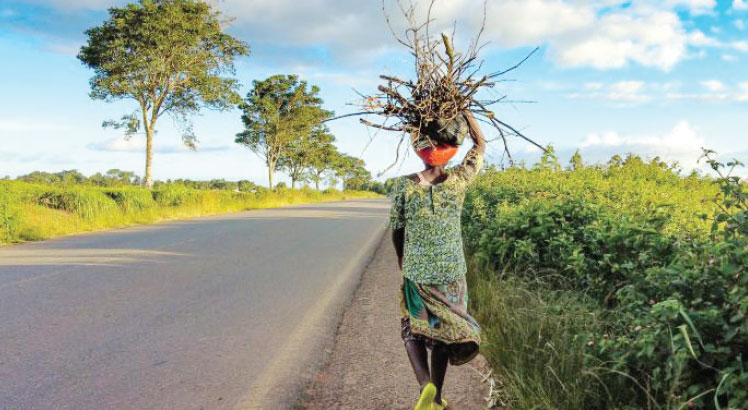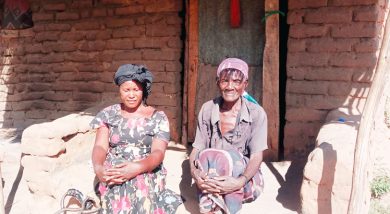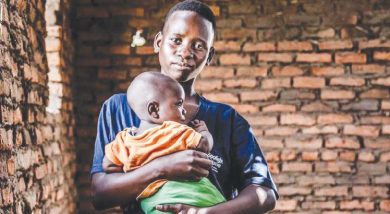Time to switch to sustainable energy
Africa is struggling to make the switch to renewables for energy security.
The scenario in many countries has worsened in the past decade.
In Malawi, many regions are losing their woodlands as more than 90 percent of the country’s population still depends on unclean fuel like firewood and charcoal.
With no serious measures to protect forests, many woodlands are no more and villagers walk long to gather firewood for cooking.
Lack of clean energy options also disproportionately affects women and girls, who are commonly seen carrying huge bundles of firewood.

Linda Banda, 32, covers the distance with a heavy load of firewood on her head every weekend.
At home, her husband and three children wait for her to come back and cook for them.
“There are no other options,” said Banda. “We don’t have electricity and can’t afford the expensive gas cookers.”
Girls and women spend around four hours on every such trip.
In 2021, at least 98 percent of households in Malawi did not have access to clean cooking fuel, shows the 2023 Tracking SDG7: The Energy Progress Report by the International Energy Agency.
The intergovernmental organisation estimates that 85.81 percent of people had no access to electricity.
The long trips to fetch firewood expose women and children to sexual abuse.
The girls also have less time to focus on education as well than boys, who are allowed to study over completing such chores.
“The distances are tiresome, but I must do this to help my mother who is getting old,” says Temwa Mwenitete, a girl from Mwenilondo in Karonga District.
Fuel spending varies across the country. Rural areas collect firewood for free, but pay with their time, labour and health.
The cities mostly depend on unclean fuels like charcoal. A bag usually weighs around 33 kilogrammes.
It costs about K18 000, says Community Energy Malawi (CEM) country director Edgar Bayani, a campaigner for sustainable, renewable energy solutions.
“Families need about two to three bags of charcoal a month, our recent study found,” said Bayani
The 2018 census shows just about 12 percent of the population have access to the grid and about six percent access via off-grid options such as mini-grids or solar home systems concentrated in urban regions.
“Even with electricity access, just around three percent of the population use it for cooking as it is expensive and unreliable. Around 89 percent of household energy needs are met by burning biomass (mainly charcoal and firewood),” says Bayani.
Burning unclean fuel also raises the risk of acute respiratory infections, according to public health expert Dzinkambani Kambalame, from the Ministry of Health.
Lack of clean energy for cooking is estimated to cause 13 000 deaths a year, he adds.
Dzinkambani states: “Exposure to smoke also impairs the productive health of women, who have care giving duties as well.
“Children born to mothers who are overly exposed to smoke from biomass cooking usually have poor birth weight or developmental problems.”
This is common in rural areas of Malawi, but a nationwide study is needed to ascertain this, he added.
Energy activists have been advocating for renewable energy usage in the country for a long time. The country has the potential for several types of renewable energy like solar, wind, geothermal, hydro and general waste.
The country has strategies pushing clean energy, including the National Energy Policy which seeks to increase the role of renewables in the energy mix to around six percent.
“Malawi Renewable Energy Strategy also specifically focuses on promotion of renewable energy but so far there is nothing to show for it,” said Bayani. “The policies are being pushed at a snail’s pace via liberalisation of the electricity market and off-grid options.”
However, the Government of Malawi seems to be moving slowly, but has set up goals to more than halve biomass use from 88.2 percent to 33.5 percent by 2035.
It also seeks to increase electricity generation from renewables to 28.9 percent by 2035 from two percent.
The government promotes decentralised mini-grids to villages that are more than five kilometres from the grid.
A study by Mzuzu University shows that Malawi has potential solar yield of 6 000 gigawatts (GW) per hour, 1.4 GW hydropower potential, seven megawatts from municipal solid waste, 7 000 giga Joules per annum of crop residues and 50 known geothermal sites with 200-megawatt potential.
The country has nationally determined contributions with both climate adaptation and mitigation goals.
Just like other countries that signed the Paris Agreement, Malawi also seeks to reduce its greenhouse gas (GHG) emissions.
“Malawi seeks to curb GHG emissions from rising from the current 9.3 million tonnes of carbon dioxide (tCO2e) equivalent to 34.6 million tCO2e in 2040,” he said. However, despite these energy plans, Malawi is still investing in coal, which is recognised as a higher emitter,” according to Minister of Energy Ibrahim Matola. n
This article first appeared in the Down To Earth print edition.





